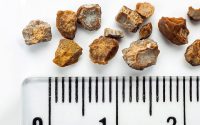Accelerating medical device manufacturing through simulation
![]()
An estimated two million different types of medical devices are in the global market today, according to the World Health Organization.1 From pacemakers to continuous glucose monitors, healthcare organizations are increasingly looking for new and innovative medical devices to help provide care and support. Erik Johnson, North American business development manager for Keysight Technologies’ healthcare segment, said the medical device landscape has changed dramatically over the past few years as more and more devices go digital.
“The focus is now on improving patient quality of life by taking advantage of emerging technologies,” he said. “Today’s medical devices enable advances in monitoring and diagnostics, and there are also a host of implantable devices [available]. What we’re seeing is that today’s medical devices have more flexibility and can be more easily utilized by patients.”
But, according to Johnson, as more medical device manufacturers look to develop new products to enhance patient care, they face three key challenges: safety, efficacy and time to market. Adopting simulation tools or solutions that enable engineers to test medical device designs in a virtual environment can help engineering teams overcome these challenges.
“Ensuring patient safety is always the number one priority for medical device manufacturers,” Johnson said. “But under the latest Food and Drug Administration (FDA) regulations, manufacturers must put a higher premium on device usability and cybersecurity to ensure that connected devices operate as designed and are secure against potential cyber threats. Simulation allows designers to test these requirements before a costly physical prototype is built.”
Device efficacy is also critical. For example, pacemaker manufacturers must manage more low-voltage components, greater data processing capabilities, shrinking form factors and increased connectivity demands. Simulation and testing solutions enable design teams to verify that all devices work as they should.
“There is an enormous number of devices connected wirelessly to the same frequency band in a hospital,” Johnson explained. “The challenge for manufacturers is making sure that their device can co-exist in this kind of noisy wireless environment. Simulation can ensure that your devices are working as designed.”
And then there’s the matter of staying competitive. With so many companies entering the medical device market, manufacturers need tools to help them reduce development time, allowing them to validate designs quickly before investing in physical prototypes.
“If manufacturers can reduce the number of prototypes through simulations in which they can check for battery life, signal integrity and other critical requirements, they can finalize their designs and get them ready for market faster,” said Johnson.
Manufacturers that invest in comprehensive simulation solutions will be at an advantage. These solutions help engineers develop safe and effective medical devices while giving them confidence that the devices will operate as intended.
“It can take months to determine an optimal design and make sure it’s working properly. But with simulation tools, you can do a lot of pre-testing and manage potential issues before you invest in that first prototype,” said Johnson. “Simulation is key to helping manufacturers complete their designs as quickly and accurately as possible so they can be confident in their devices’ safety, usability and efficacy. And that’s what today’s manufacturers need.”
Learn more by visiting Keysight Healthcare Solutions.
Reference
Source: Read Full Article


